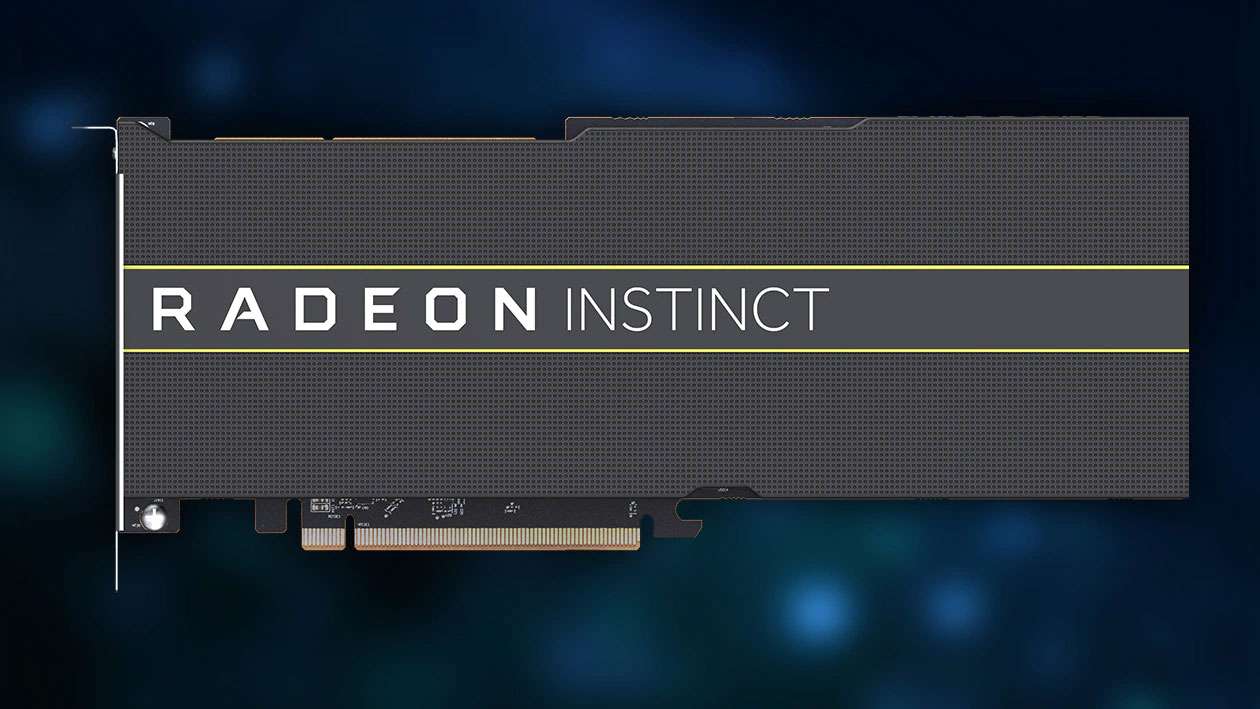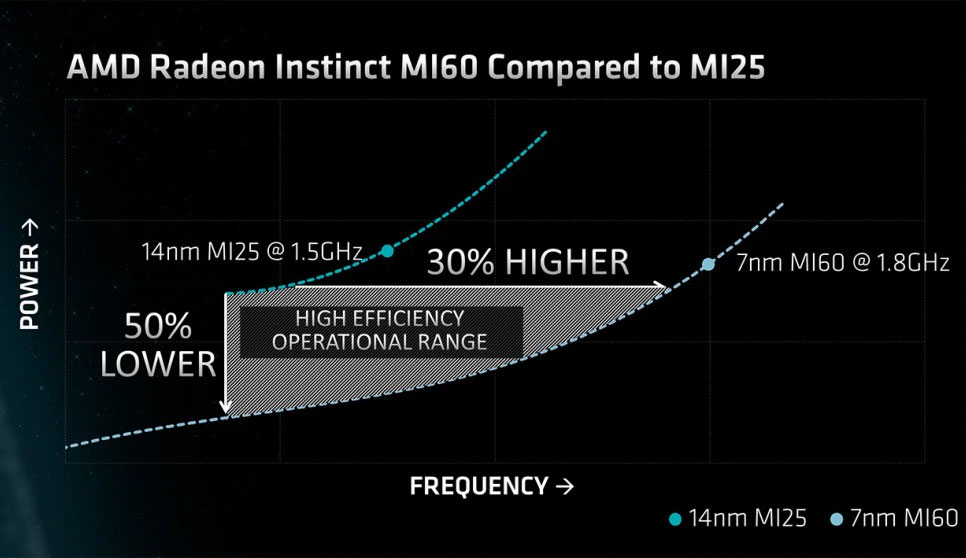AMD rolls out the first-ever 7nm GPU, but it’s not for gaming (yet)
There's more here than just a die shrink.

AMD might be losing the performance battle with Nvidia at the high-end of the gaming market, but it just won the race to 7 nanometers with its new Vega-based Radeon Instinct MI60 and MI50 graphics cards. So, what does that mean, and just as importantly, should you care?
Those two questions go hand-in-hand. AMD's first foray into 7nm GPU territory isn't aimed at gamers—nobody's going to buy a Radeon Instinct card for their gaming PC, nor should anyone want to. However, the transition to 7nm is an important step for AMD, and eventually for gamers, because of the performance benefits that come with it.
One thing to keep in mind is that it's not unusual for companies to roll out new technologies to the professional sector first, then to consumers. In fact, we saw this with Vega already—the Radeon Vega Frontier Edition for professionals hit the market before the Radeon RX Vega 64 and 56 cards for gamers arrived.

AMD's 7nm Vega GPU packs 13.2 billion transistors in a 331mm^2 package, compared to 12.5 billion transistors in a 486^mm package in the original Vega. Looking at the Radeon Instinct MI60, AMD claims it delivers up to 1.25x more performance than the previous generation Radeon Instinct MI25 within the same power envelope, and uses 50 percent less power at the same frequency.
Beyond the die shrink, the newest Radeon Instinct cards come with a few other upgrades that should benefit professionals, such as PCIe 4.0 support (another industry first), and two additional HBM2 memory controllers for a total of four. With a bump in memory clockspeed to 1GHz, AMD is touting a whopping 1TB/s of memory bandwidth in both the MI60 and MI50, with the former touting 32GB of HBM2 and the latter with 16GB.
Both cards also include a pair of Infinity Fabric links, allowing users to connect up to two clusters of four cards in a single service. That kind of setup can deliver up to 200GB/s of peer-to-peer GPU bandwidth.
It remains to be seen if AMD will release a 7nm Vega GPU for consumers, or if it will wait for Navi. The extra HBM2 stacks and memory bandwidth likely won't fix AMD's performance deficit, where the GTX 1080 Ti is about 40 percent faster than Vega 64, never mind the RTX 2080 Ti. But AMD is more focused on wringing every bit of performance possible out its Polaris architecture, which for the most part is competitive in the midrange and entry-level markets.
The biggest gaming news, reviews and hardware deals
Keep up to date with the most important stories and the best deals, as picked by the PC Gamer team.
Paul has been playing PC games and raking his knuckles on computer hardware since the Commodore 64. He does not have any tattoos, but thinks it would be cool to get one that reads LOAD"*",8,1. In his off time, he rides motorcycles and wrestles alligators (only one of those is true).


